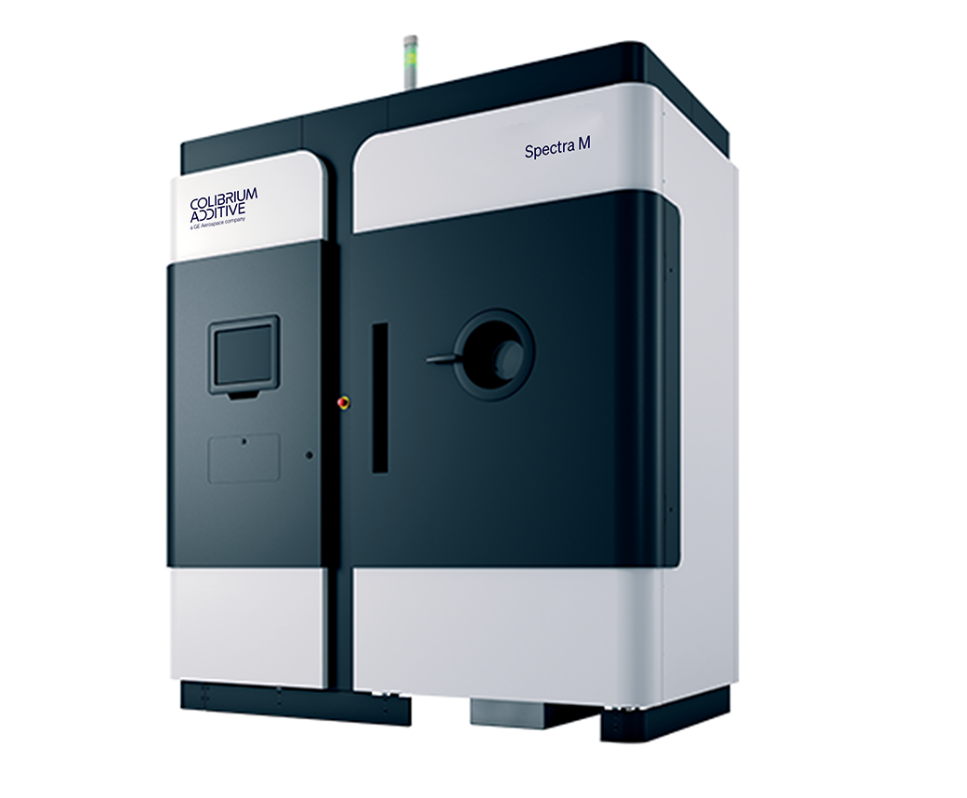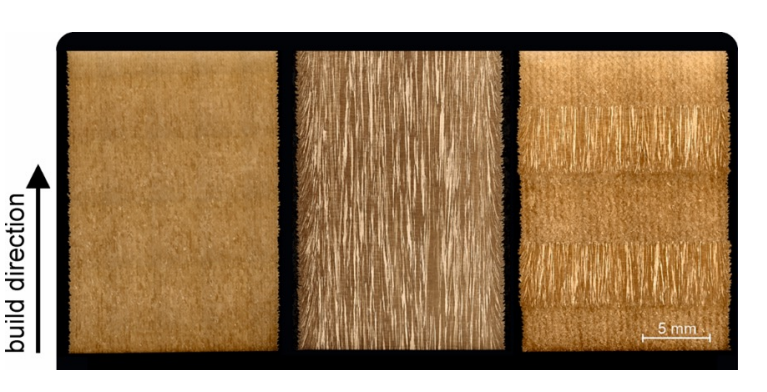Register now for our Additive Manufacturing Advantage online event for insights on AM developments in aerospace, space, and defense sectors from industry leaders!
Colibrium Additive, a GE Aerospace company has introduced new additions to its portfolio at RAPID + TCT 2024.
These additions include the new Spectra M electron beam melting (EB-PBF) printer, EBMControl 6.4 software upgrade to Colibrium Additive’s core EB-PBF software, and a coarse Ti64 powder solution for L-PBF printers. The Spectra M is now available for order, with the first deliveries expected in early Q1 2025.
The development of this new printer is a response to the increasing demand from additive manufacturers for a smaller build volume EB-PBF printer that maintains the design flexibility and productivity benefits of electron beam melting technology. By leveraging its existing Spectra technology platform, Colibrium Additive has created this more compact printer without sacrificing performance.
“Having the largest installed base of highly experienced, long-standing users provides invaluable insight and help is constantly evolving our portfolio to provide EB-PBF technologies that fulfil their specific requirements as they continue to scale their additive manufacturing operations. Spectra M is in direct response to constant dialogue with our customers, particularly those additive super users in the orthopedic implant industry,” said Oscar Angervall, senior product manager, Colibrium Additive.

A way of improving efficiency and cost-effectiveness
With a notable focus on medical and orthopedic implant manufacturers, the Spectra M facilitates reduced cost-per-part and overall production costs. Key specifications of the Spectra M include a build envelope of Ø270 x 430 mm, a beam power of 4.5 kW, and compatibility with materials such as Ti6Al4V Grade 5 and Ti6Al4V Grade 23.
The printer comes equipped with EBMControl 6.4, an upgraded EBM software which introduces three novel functionalities Point Melt, Powder Supports, and Plate Free technology. This allows customers to select either high productivity or advanced Point Melt processes, allowing for support-free printing while maintaining surface roughness and mechanical properties.
As per Colibirum Additive, Point Melt technology involves melting metal powder through individual points rather than lines, enhancing temperature control precision and minimizing temperature gradients during the printing of parts. This approach ensures consistent isotropic material properties, regardless of the build direction, and notably enhances yield strength. Furthermore, Point Melt delivers exceptional surface smoothness comparable to that achieved by LPBF methods.
Leveraging Point Melt capabilities, Powder Supports minimize or eliminate the need for support structures during part fabrication, ensuring dimensional accuracy and aiming to reduce post-processing expenses. Meanwhile, Plate Free offers a hands-off alternative to traditional “Start Plate Heating,” gradually sintering powder to enable direct part building. This approach provides several benefits, including faster machine turnaround, reduced operator involvement, lower contamination risk, extended cathode lifespan, and the ability to initiate multiple builds per machine cycle without requiring bulky, costly consumables.
EBMControl 6.4 is commercially available for customers using Colibrium Additive’s novel Spectra M and Spectra L 3D printers.

Additionally, AP&C, a Colibrium Additive company under GE Aerospace, unveiled a coarse Ti64 powder solution aimed at reducing costs in metal 3D printing. This material utilizes larger-sized particles within the 15-45 µm and 15-53 µm range, typically considered coarse compared to finer powders traditionally used in laser powder bed fusion (L-PBF). Despite their larger size, these particles maintain high-quality standards suitable for critical applications in aerospace and orthopedics.
The coarse Ti64 powder addresses the challenges of cost and sustainability in additive manufacturing. It offers potential savings by being more economical to produce and handle, while also being safer due to reduced reactivity during storage and handling. Additionally, these particles enhance sustainability by enabling greater powder reusability compared to finer powders, thus reducing waste and environmental impact.
Recent milestones at Colibrium Additive
As a part of its strategic realignment, Colibrium Additive rebranded itself from GE Additive, now operating under GE Aerospace. This shift includes phasing out the Concept Laser and Arcam EBM brands while updating AP&C’s branding to align more closely with GE Aerospace’s identity.
The new name, Colibrium Additive, is derived from a fusion of “collaborative” and “equilibrium.” Established in 2016 following the acquisitions of Concept Laser and Arcam, this rebranding aims to unify the company’s additive manufacturing capabilities under a cohesive brand within the aerospace sector.
Elsewhere, Colibrium Additive manufactured a specialized 3D printed titanium cast for eleven-year-old gorilla Gladys at Cincinnati Zoo, addressing her fractured humerus. Engineered to endure Gladys’ natural activities and prevent further injury, the advanced cast was tailored to meet the distinct treatment challenges for gorillas. According to zoo officials, Colibrium Additive’s swift production turnaround highlights its effectiveness in meeting precise medical requirements.
Join the Expert Committee for the 2024 3D Printing Industry Awards to help select the winners!
What 3D printing trends do the industry leaders anticipate this year?
What does the Future of 3D printing hold for the next 10 years?
To stay up to date with the latest 3D printing news, don’t forget to subscribe to the 3D Printing Industry newsletter or follow us on Twitter, or like our page on Facebook.
While you’re here, why not subscribe to our Youtube channel? Featuring discussion, debriefs, video shorts, and webinar replays.
Featured image shows the Spectra M 3D printer. Image via Colibrium Additive.



